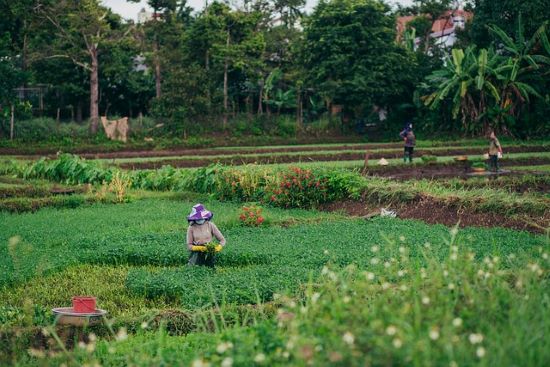Atrazine is a widely used herbicide in agriculture, particularly known for its effectiveness in controlling broadleaf and grassy weeds. While it is beneficial for increasing crop yields, its use has raised significant health and environmental concerns. This article provides an in-depth look at atrazine, its applications, potential risks, and regulatory status, with a special focus on its usage in India.
What is Atrazine?
Atrazine is a selective herbicide that has been extensively used since the 1950s. It is one of the most commonly used herbicides in the world, especially in corn and sugarcane production. Atrazine works by inhibiting photosynthesis in plants, effectively controlling weed growth while leaving crops unharmed. (Source)
Description and Usage
Description: Atrazine is a synthetic herbicide belonging to the triazine class of chemicals. It is typically available in various formulations, including liquid concentrates, water-dispersible granules, and wettable powders. Atrazine is applied to crops either before planting or post-emergence, depending on the specific agricultural practice. (Source)
Usage: Atrazine is predominantly used in agriculture to manage weeds that compete with crops for nutrients, water, and sunlight. Key applications include:
- Corn: It is heavily used in corn farming to control broadleaf weeds and grasses.
- Sugarcane: It is also widely applied in sugarcane fields for weed management.
- Vegetables: Atrazine can be used in vegetable farming, particularly in crops like asparagus and some leafy greens.
- Other Crops: Besides corn and sugarcane, atrazine is used in sorghum and certain fruit crops. (Source)
Risks to Human Health and Environment
Health Risks:
It poses several health risks, particularly through prolonged exposure:
- Endocrine Disruption: It is known to act as an endocrine disruptor, potentially affecting hormonal balance and reproductive health.
- Cancer Risk: Some studies have linked atrazine exposure to an increased risk of certain cancers, such as non-Hodgkin lymphoma and prostate cancer.
- Birth Defects: Research indicates that atrazine exposure during pregnancy can lead to birth defects and developmental issues.
- Acute Toxicity: Short-term exposure to high levels of atrazine can cause symptoms like nausea, dizziness, and respiratory problems. (Source)
Environmental Risks:
Atrazine has significant environmental impacts, including:
- Water Contamination: It is highly soluble in water and can contaminate surface and groundwater through agricultural runoff, posing risks to aquatic ecosystems.
- Soil Health: Prolonged use of atrazine can lead to soil contamination, affecting soil microorganisms and overall soil health.
- Biodiversity: It can harm non-target plant species and wildlife, disrupting local ecosystems and biodiversity.
- Herbicide Resistance: Overuse of it can lead to the development of herbicide-resistant weed species, making weed management more challenging. (Source)
Also, read: All You Need to Know About Chlorpyrifos, A Common Pesticide Used in Vegetables
Atrazine Use in India
States and Crops: It is used in various states across India, with significant application in states like Punjab, Haryana, Uttar Pradesh, and Maharashtra. It is primarily used in corn and sugarcane cultivation. Among these, corn fields in Punjab and Haryana see extensive use of atrazine due to the high prevalence of weed issues in these regions.
Regulatory Status in India: In India, the use of it is regulated by the Central Insecticides Board and Registration Committee (CIBRC). While it is not banned, there are specific guidelines on its usage to mitigate potential risks. Farmers should follow recommended application rates and safety precautions to minimize health and environmental impacts. (Source)
Global Status of Atrazine
United States: In the US, it remains one of the most commonly used herbicides, particularly in corn production. The Environmental Protection Agency (EPA) regulates its use, although there is ongoing debate about its safety and environmental impact. Some states have implemented stricter regulations or monitoring programs to address contamination issues.
European Union: The European Union has taken a more precautionary approach, banning the use of it in 2004 due to concerns about water contamination and potential health risks. This ban reflects the EU’s stringent regulatory standards for pesticides.
Other Countries: It is used in many countries worldwide, but regulatory approaches vary. For instance:
- Australia: It can use is permitted but subject to strict regulations and monitoring to protect water quality.
- Canada: It is use is allowed, but there are restrictions and guidelines to minimize environmental impact.
- Brazil: It is widely used in agriculture, particularly in corn and sugarcane production, with regulations in place to ensure safe application.
Also, watch web stories: What is the importance of yoga in our daily life?
FAQs
1. Is atrazine safe to use in home gardens?
- It is not recommended for use in home gardens due to its potential health risks and environmental impact. Safer alternatives should be considered for residential gardening.
2. How does atrazine affect drinking water?
- It can contaminate drinking water through agricultural runoff. Long-term exposure to atrazine in drinking water is a health concern, prompting the need for regular monitoring and water treatment.
3. What are the symptoms of atrazine exposure?
- Symptoms of acute atrazine exposure include nausea, dizziness, and respiratory problems. Long-term exposure may lead to endocrine disruption and increased cancer risk.
4. Are there safer alternatives to atrazine?
- Yes, integrated pest management (IPM) strategies, organic farming practices, and the use of less toxic herbicides can provide effective weed control while reducing health and environmental risks.
5. Why is atrazine controversial?
- It is controversial due to its potential health risks, environmental impact, and the varying regulatory stances worldwide. Ongoing research and regulatory reviews continue to shape the debate over its safety.





